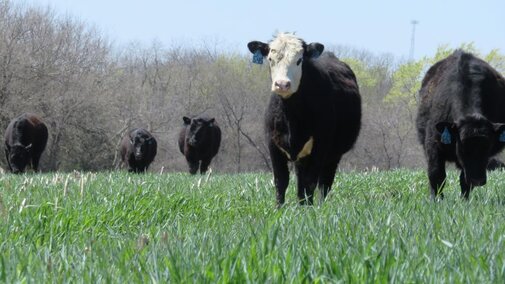Dormant Alfalfa Weed Control
Minimal snow cover may have added additional stress to alfalfa stands that may have already been under pressure from a late fall cutting. A slow green-up and possible winterkill opens the door to an early spring invasion of winter annual weeds.
Plants like henbit, pennycress, shepherd’s purse, mustard, annual bluegrass and cheatgrass seem to magically appear in our stands every spring. These winter annuals germinate in the fall, lie dormant during winter, then pick up growth quickly in the spring as warm temperatures return. Greening up before almost any other plants in our fields gives these species a competitive advantage, and they capitalize on it with fast growth.
This speedy life cycle means our window for control is limited, especially in alfalfa. Because we don’t want to damage the growing alfalfa plant, the best window of opportunity is in the short time during spring where winter annuals have started to grow again, but alfalfa is still dormant.
To take advantage, we need to be ready to act. Scout alfalfa fields and determine where weed issues may arise, then keep an eye on these spots as we get closer to spring so we can pull the trigger when the weeds are green but the alfalfa is not.
It is also important to identify what species need to be addressed. Herbicide efficacy varies by species, so picking the product that best controls your problem weed can prevent future applications and save money in the long run. Need for broadleaf or grass weed control is especially important to identify as some broadleaf products have no action at all on grasses.
Winter annual weeds are a perennial problem in alfalfa but may be especially tough this year due to the stress of late cuttings last fall and an open winter. To be successful with control, scout early and have the right herbicide ready to apply after weeds green up but before the alfalfa breaks dormancy.
Planning for Cover Crops to be Forage
By Brad Schick
Cover crops have become more than just a practice to receive a payment. Grazing, haying or ensiling has become very popular. To make it work well, planning is necessary.
Whether forage is wanted this spring or fall or even next spring, decisions now may affect what is grown. If fall grazing is needed this year from oats to turnips, radishes to ryegrass, what is planted and timing of planting matters. Traditional corn and soybeans won’t typically fit a system that needs fall forage. Once seeded, our forages need about six weeks of growth before grazing. A typical corn/soybean rotation doesn’t provide enough growing days after harvest. Why are we talking about this now?
Herbicide carryover is another reason. What herbicides are applied on the primary crop may affect the growth of the forages planted later in the summer. The long residual of some chemicals can prevent or damage growth. Some herbicides have very long restrictions for replant or rotation. Make sure the chemicals selected work well with a secondary crop or forage.
One way to ensure good growth on forages for fall in a traditional row crop system is to airseed, plant while the corn or soybeans will allow machinery through the field, or use a shorter season crop. While this may reduce yield, the benefit comes from having forage. Just be sure that the yield reduction doesn’t push the operation into the red.

